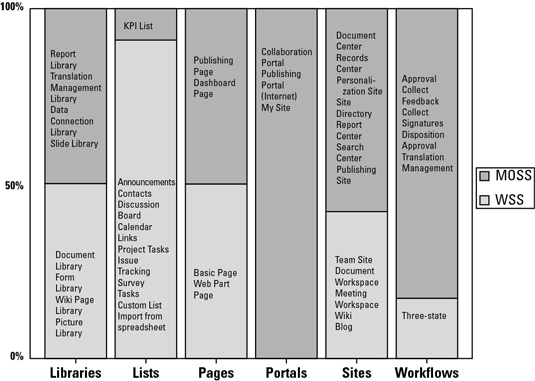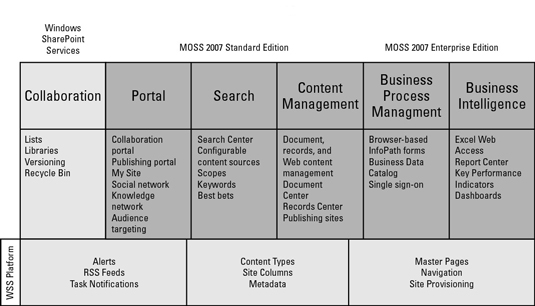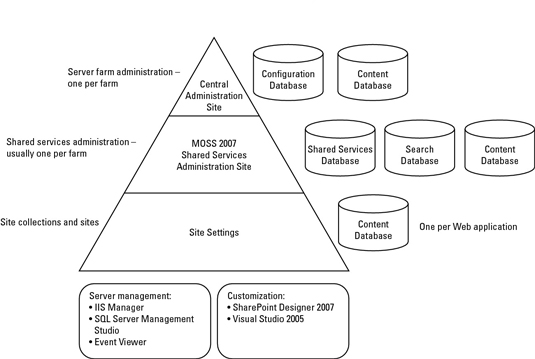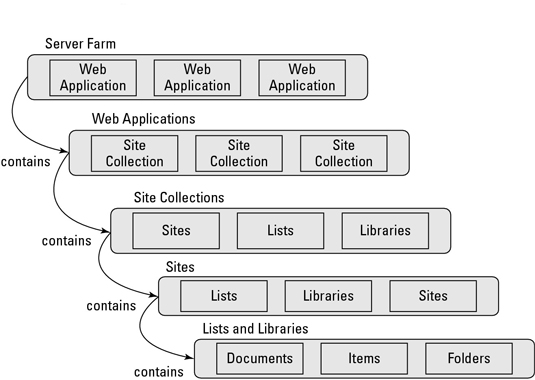Microsoft SharePoint lets you share information across platforms and users and it helps to know what all the pieces of Sharepoint can do. You may want to look at SharePoint’s administration model or its site hierarchy, as well.
>
>
SharePoint’s Feature Areas by Product Type: WSS/MOSS
Microsoft Office SharePoint Server (MOSS) 2007 is officially part of the Microsoft Office suite of products, which gives you access to Windows SharePoint Services (WSS). The first table lays out the WSS and MOSS templates.

The table here shows SharePoint’s major features.

>
>
>
How to Access SharePoint from a Client
When you’re working for a client using Microsoft SharePoint, you may have to use their browser or other access tool. This table shows you how to get to where you want to go from a variety of points:
| Client Integration | URL Access http://server | UNC Access //server/ | Custom Applications |
|---|---|---|---|
| Word 2003/2007 | Browsers — IE, Firefox, Safari | Windows Explorer | Object model |
| Excel 2003/2007 | Office 2007 clients | Mapped drive letter (net use command) | Web Services |
| Outlook 2003/2007 | Office 2003 clients | ||
| Access 2003/2007 | Other Windows applications | ||
| PowerPoint 2007 | My Network Places | ||
| InfoPath 2007 |
>
>
>
SharePoint 2007’s Administration Model
Microsoft SharePoint 2007 uses an administration model — a family of technologies that provides a server infrastructure to support the needs of information workers and their employers. The configuration of the administration model looks like this:

>
>
>
SharePoint’s Site Hierarchy Model
All of Microsoft SharePoint’s features are delivered via a hierarchy of Web sites. This sample SharePoint hierarchy begins at folders and moves up the chain to the server farm.

>
>
dummies
Source:http://www.dummies.com/how-to/content/microsoft-sharepoint-2007-for-dummies-cheat-sheet.html
No comments:
Post a Comment